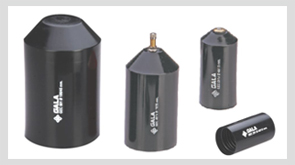
Heat shrink tubes, cable-end sealing caps, heat shrink cable end caps are some products that are indispensable to any electrical work or setting. Heat shrink tubes are used to fit snugly, enclosing exposed wires thus offering them protection from external factors. Bare wires and wire splices get excellent protection through heat shrink products.
Offering abrasion endurance, insulation and bundling wires are some of the important tasks performed by heat shrink tubing. They are available today in a wide range of flexibility levels, color-shades and temperature sensitivities to suit the needs of differing applications. Its applications range from crucial electrical to highly sensitive military ones and the more mundane applications.
The crucial aspect of its production process is the cross-linking procedure. This involves stretching the heat shrink tubing to an elongated length which comes back to its original dimensions during the process of ‘shrinking’. The stretching is in fact, its real modification. It is therefore very essential to ensure that the size denoted on the tubing which is expressed in the form of a ratio is in line with the size wanted for the application. In the ratio, the first figure is the stretched length and the second figure is the length after shrinking. For example, when the ratio given is 2:1, it means that the tube’s shrinking will be to half of the present given size. The ratios come in different sizes like 4:1, 6:1, 5:1 and so on.
However, the most important factor for effective functioning of the tubing is the application of heat which leads to its shrinking. The heat source used for one application may prove unworthy for the other and in fact can cause accidents. Following are a few sources explained in brief to give an idea about the effective ones that ought to be used.
Hot Air: Blowing hot air through electrical tools available for the purpose is helpful in shrinking the heat tubing to the required lengths. For example, a heat gun provides the required heat indirectly by blowing hot air to the tubing allowing it to shrink.
Flame: Holding open flame sufficiently close to the heat shrink to offer the required heat yet prevent it from catching fire is another option. Candles, butane lighters, soldering torch are some of the tools used here. These tools should be used in areas which are adequately ventilated and which do not contain presence of any flammable vapors like gas, oil or propane.
Other Alternatives: If you happen to have no tool available then you can try keeping your piece of wiring close to a light bulb. The heat emanating from the bulb will be able to shrink your heat tubing. Placing the splice in the oven is an unconventional method of providing the required heat; however, close monitoring is necessary here so as to avoid the incidence of any accidents taking place.
The most common way of going about this procedure is by adopting the first option of a heat gun. Ensure you provide heat at the required temperature and you will see that your heat shrink tubes fit snugly to the desired application.